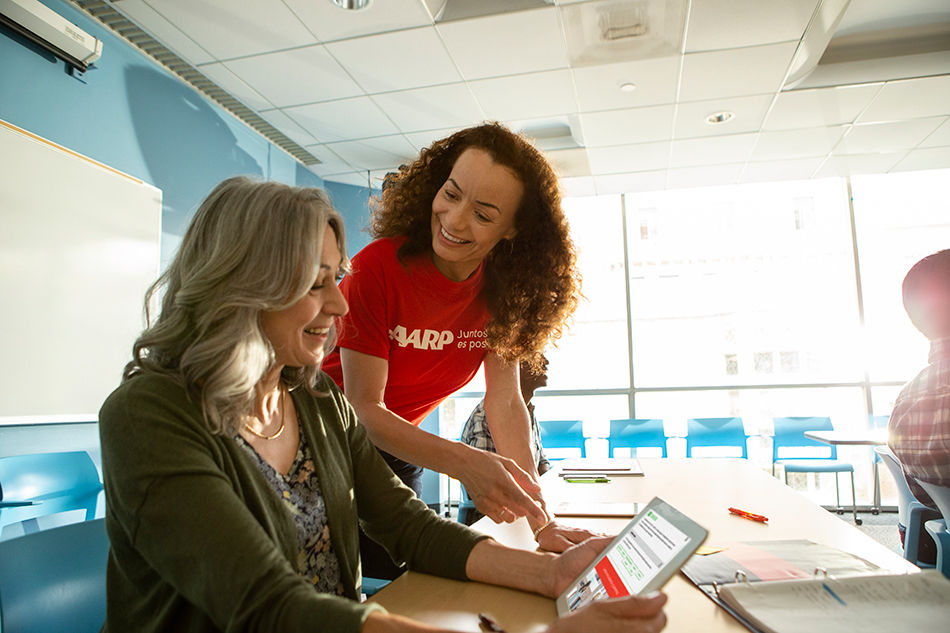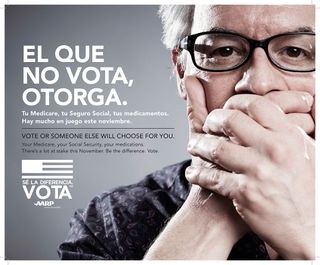Changing the Conversation

The fact that Hispanics are much younger than the overall population has captivated many marketers trying to reach younger consumers. But less attention has been paid to another important data point: Hispanics are also the fastest-growing ethnic group among Americans 50 and older.
AARP is trying to change that by providing this often-ignored group with a plethora of resources and information to deal with a wide variety of issues, ranging from health care and financial advice to aging and caregiving.
AARP, which had $1.64 billion in operating revenue in 2017 and is the largest U.S. lobbying organization, doesn’t break out how much it spends on its Latino-targeted programs. But the scale and success of AARP’s efforts will be honored at the Hispanic Television Summit with the Award for Corporate Leadership in Hispanic Television and Video.
Much of AARP’s success in reaching Hispanics is built on an extremely sophisticated media strategy.
“Television has been the primary driver and has continued to be because in order to drive awareness, you need the continuity of messaging,” said Yvette Peña, AARP VP of multicultural leadership for Hispanic/Latino audience strategy. “We’ve been very successful with media buys on Univision and Telemundo, as well as some integrations. But we’ve also been able to move to other platforms. We need to go where the members and prospects are, and they’re on digital social and mobile. So we worked with Google, we worked with Facebook.
“One of the major things we’ve done is to drive awareness of AARP and our awareness has been up significantly since 2018,” Peña added.
Another major focus has been to provide resources and information in both Spanish and English to help Hispanics aged 50-plus. “We want AARP to be part of the Hispanic community,” Peña said. “We want people who have a need for information on caregiving or people who need a resource on how to start saving for retirement to think about AARP and to know that they can go to AARP.org and get the resources they need.”
Broadcasting & Cable Newsletter
The smarter way to stay on top of broadcasting and cable industry. Sign up below
Care to Laugh
One example of this multiplatform, multilingual strategy is AARP’s work relating to caregiving for older Hispanics. After doing research on the importance of the issue among U.S. Latinos, AARP created Spanish-language materials for caregivers and their families and in 2017 produced a documentary about caregivers. “It aired on a Latino network [Azteca America], and we’ve also gone around the country [to various state chapters] showing it in local communities, followed by a panel,” Peña said.
Last year, AARP partnered with the Ad Council for spots on caregiving, and AARP Studios produced a documentary called Care to Laugh with a Latino host, Jesus Trejo.
Other notable efforts targeting Hispanics include a campaign on prescription drug prices and efforts “around border engagement to mobilize 50-plus-year-old Latinos to encourage them to vote” in the 2018 midterm elections, Peña said. “We had a Latino campaign that was called, ‘Be the Difference, Vote’ and put that campaign on television through a partnership with Univision.” It also included online video, an advocacy page on Facebook and print and email blasts.
All of these campaigns are based on a very sophisticated view of the Hispanic market that recognizes its diversity, in terms of both language and the different cultural backgrounds of U.S. Hispanics.

Given the diversity in Hispanic family backgrounds, which ranges from Mexico to Latin America and the Caribbean, AARP tries to use neutral Spanish that isn’t too colloquial in its national campaigns, Peña said. State organizations, though, will sometimes localize ads to reflect regional demographics. “You can’t have all light-skinned Latinos,” Peña said. “There are Afro Latinos and blended families.”
AARP has also embraced the complexities of language use in the Hispanic community. “We know that Latinos are very bilingual and they change back and forth from Spanish to English,” Peña said. “So we’re working hard to make sure our communication in English is effective with Hispanics, and we’re trying to do some bilingual buys to see how we can play with the bilingual copy.”
While older Hispanics are the focus, AARP has also targeted millennials, given their importance as caregivers and their ability to help reach their elders. “I don’t know many people who are doing this, but we understand that the younger audience are the influencers that can help us get to the 50-plus and their families in multigenerational households,” Peña said.
Going forward, Peña expects AARP to keep focusing on such longstanding issues as health, caregiving, age discrimination, fraud against seniors, financial advice and getting out the vote for the 2020 elections.
“We want to change the conversation about aging and make an impact in the community by giving them the tools they need and by using media very, very effectively to communicate all this,” Peña concluded. “TV is the primary channel, but we want to be where people are [on digital platforms] and we want to use the power of millennials and influencers … so they can help us relate our message.”










